John understands what just one slip can mean for a facility. As an environmental health and safety manager in the manufacturing industry, he’s seen not one, not two, but three accidents in his workplace this year that could have been avoided – if only the right prevention methods were in place.
This slips, trips and falls guidebook was created to not only give you a better explanation of what this common workplace safety offender is all about, but to dive deeper into exactly what causes these accidents, what you can do to avoid them and the steps to take when faced with an occurrence at your own facility.What You Need to Know About Slips, Trips and Falls
Slip, trip and fall occurrences are no stranger to manufacturing facilities. But how much do you really know about these incidents and the regulations that are in place to keep your workplace safer?What exactly are we talking about with slips, trips and falls, you ask?
Here's a breakdown:
SLIP: Too little friction or traction between feet and walking/working surface, resulting in loss of balance.
TRIP: When a foot or lower leg hits an object and the upper body continues to move, or when stepping down to a lower surface, resulting in a loss of balance.
FALL: Too far off center of balance, resulting in a descent to the floor, into or against an object, or to a surface at a lower level than original surface1.1These incidents are often caused by slippery, irregular or uneven surfaces, obstacles on the floor, or uncovered/unidentified hazard areas.
Slips, trips and falls are a dangerous and costly workplace occurrence that can be avoided.
In fact, there are some industry regulations currently in place that apply to these events: OSHA 29 CFR 1910.22 – Walking/Working SurfacesThis standard supports worker safety by keeping workplaces clean and safe from hazards, including:
- Keeping facilities clean, orderly and dry.
- Providing draining, platforms, mats or other dry standing places when wet processes are used.
- Keeping floors and workplaces free from protruding nails, splinters, holes and loose boards.
- Keeping aisles clear and in good repair.
- Permanently marking aisles and passageways.
- Using covers and guardrails to protect workers from open pits, tanks, vats, etc.
- Marking loads with approved plates and maintaining safe load weights.
OSHA 29 CFR 1910.36 & 37 – Means of Egress
This standard supports the safety of exit routes. Some of the key elements that apply to slips, trips and fall in this standard include:- The outdoor exit route must have guardrails to protect unenclosed sides if a fall hazard exists.
- The outdoor exit route must be reasonably straight and have smooth, solid, substantially level walkways.
- The outdoor exit route must be covered if snow or ice is likely to accumulate along the route, unless the employer can demonstrate that any snow or ice accumulation will be removed before it presents a slipping hazard.
ANSI A1264.2-2012 – Provision for the Slip Resistance on Walking/Working Surfaces
This standard sets forth provisions for protecting persons where there is potential for slips and falls as a result of surface characteristics or conditions. It requires:
- Consideration of the use of slip resistant footwear to maximize traction.
- Mats and runners to be used in areas where individuals may encounter slippery contaminants or foreign materials on the floor surface.
- A housekeeping program, including appropriate cleaning and maintenance procedures and employee training, to be implemented to maintain safe walking surfaces.
- Warnings provided where a slip/fall hazard has been identified.
The Safety, Productivity and Financial Impacts of Slips, Trips and Falls
When you need operations to run safely and efficiently, a slip, trip or fall is the last thing you want to happen. Just what can a slip, trip or fall mean for you and your facility?The Costly Effects of Slips, Trips and Falls
It’s amazing what one small drip or one misplaced tool can lead to. When it comes to safety and compliance, a slip, trip or fall can lead to serious injuries, a variety of citations and costs, and an overall impact on the running of your facility.Let’s explore the impact an incident can have in three key areas:
Safety Impact
Safety is the number one concern surrounding slip, trip and fall hazards. That’s because these hazards account for the majority of industry accidents, ranging in severity, from minor pain to temporary or permanent disability, and even death.Did You Know?
Slips, trips and falls:
- Are one of the leading causes of unintentional injuries in the U.S., accounting for approximately 8.9 million emergency room visits.
- Account for 15% of all accidental deaths, the second leading cause behind motor vehicles.
- Lead to over 17% of all disabling occupational injuries.
- Could be prevented with the right precautions.
Productivity Impact
When an incident occurs and a worker experiences an injury, this could lead to a significant loss in productivity that impacts your business. That’s because the out-of-work days of an experienced worker means a less experienced or temporary worker would need to step in.Did You Know?
Slips, trips and falls:
- 1 in 6 lost time injuries.
- 95 million workdays per year lost.
- An average of 11 days away from work.
Financial Impact
When a slip, trip or fall happens, it can lead to thousands of dollars in expenses for both employers and employees.- Employers face lost productivity, increased industrial insurance premiums, regulatory fines and costs associated with training a replacement worker.
- Workers lose wages due to out-of-work days and face the possibility of paying out-of-pocket medical expenses.
Did You Know?
Slips, trips and falls cost an average of $20,000 per incident.
For the complete Slips, Trips and Falls: Advancing Your Safety Program document, click here.
Previously Featured on Brady SPC's website.
Brought To You By
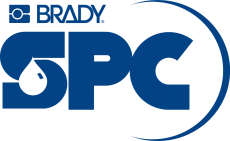
Brady SPC has been successfully developing, manufacturing and shipping absorbent products for nearly 40 years. Throughout the decades, our customers have relied on SPC products to help them prevent slips, trips and falls within their facilities. Absorbents and spill control products are our focus. At Brady SPC, we’ve invested in our people, processes and facilities to ensure that we provide our customers with the best products for all their spill control needs.
More from Brady SPC
More on Facility Safety
To maintain agility in the workplace, many companies are increasingly seeing the need for outdoor flammable liquid storage.
A successful waste management program should go beyond checking boxes for compliance. It can help businesses operate efficiently, protect workers and contribute to environmental sustainability. Here’s a guide for manufacturers.
MSC is your trusted source for effective training to help make your facility safer, more productive and compliant.


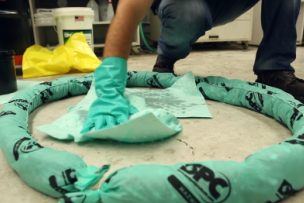
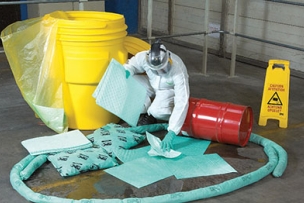

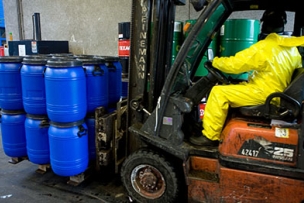
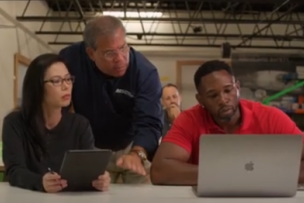
Talk to Us!
Leave a reply
Your email address will not be published. Required fields are marked *